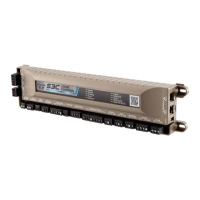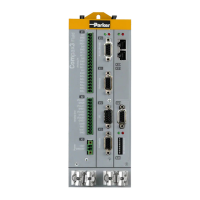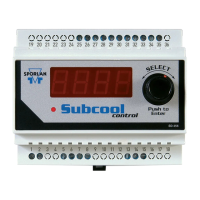Parker Hannifin
- 58 - Aries Controller Hardware Installation Guide
Servo Tuning—Tutorial
The tuning process lets you hone the servo response and settling for your
particular system.
Settling and responsiveness are the main components that determine
performance. Generally, the goal of servo tuning is good settling, with a
secondary goal of good responsiveness. Ultimately, only you can determine
which aspect is of prime importance, and when the tuning is acceptable for
your application.
Warning — When tuning a servo motor, remove all loads from the motor
to prevent personal injury or mechanical destruction. Once tuning provides
a stable and responsive servo motor, you can attach the load and start the
tuning process again.
Note: Because the differences between systems are wide, the following
are provided only as guidelines.
Proportional and derivative gains work against each other—an increase to
one gain affects the other. With this in mind, treat tuning as an iterative
process; alternate between adjusting proportional and derivative gains.
• PGAIN: Adjusts servo response. You can always try to increase
responsiveness, though mechanics ultimately limit response time.
• DGAIN: Adjusts settling time. The goal is always good settling.
• IGAIN: Adjusts steady-state errors (not discussed in this tutorial).
Adding integral gain also increases responsiveness, though the
increase might not be noticeable.
Tuning Example
The tuning example assumes the following:
• Parker BE 241 motor.
• 9 to 1 load-to-rotor inertia ratio.
Illustration Legend
Color Position
Green Commanded
Yellow Actual

